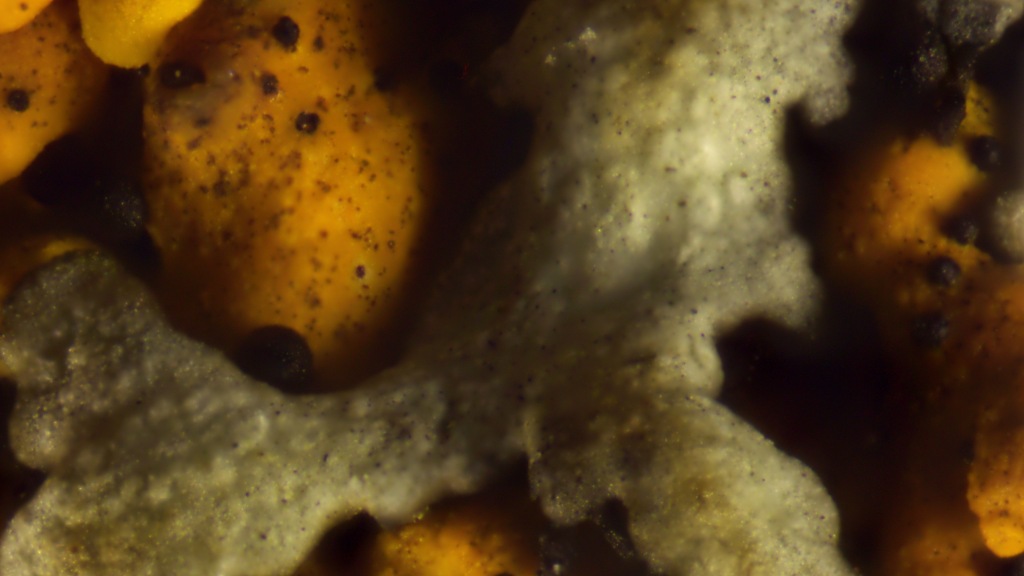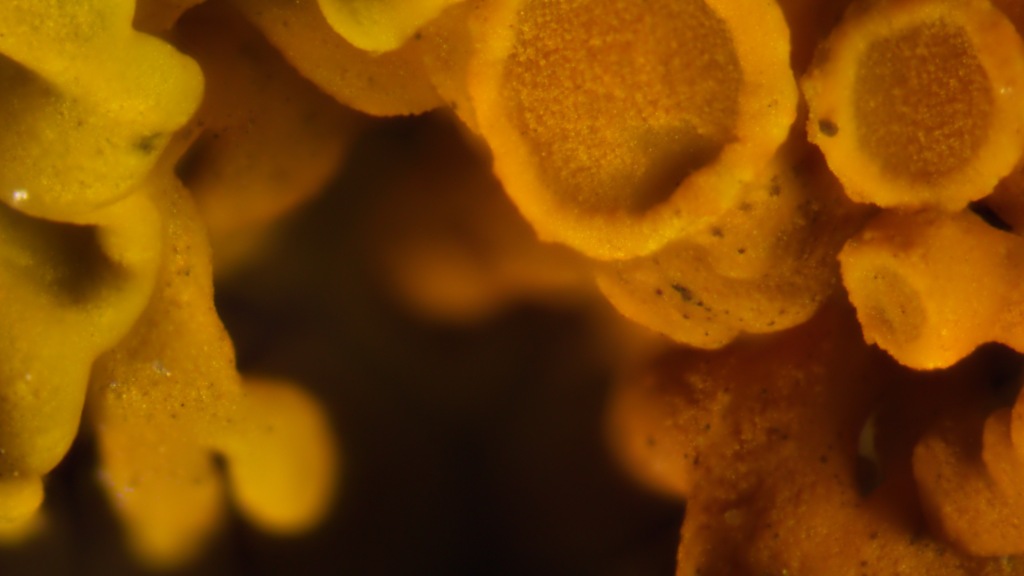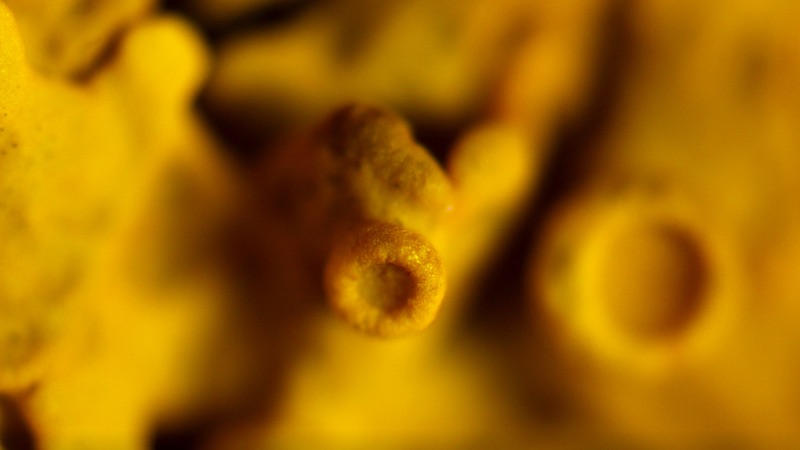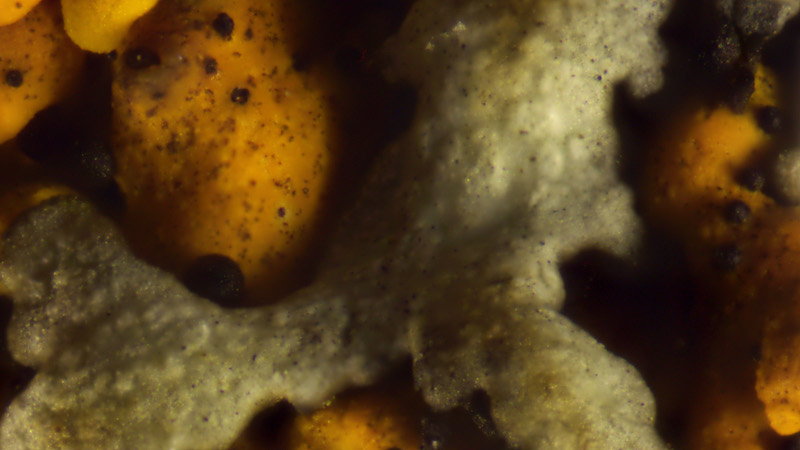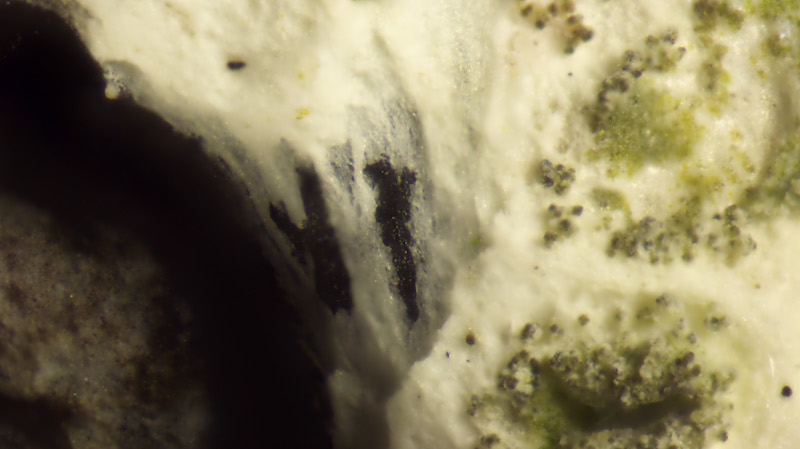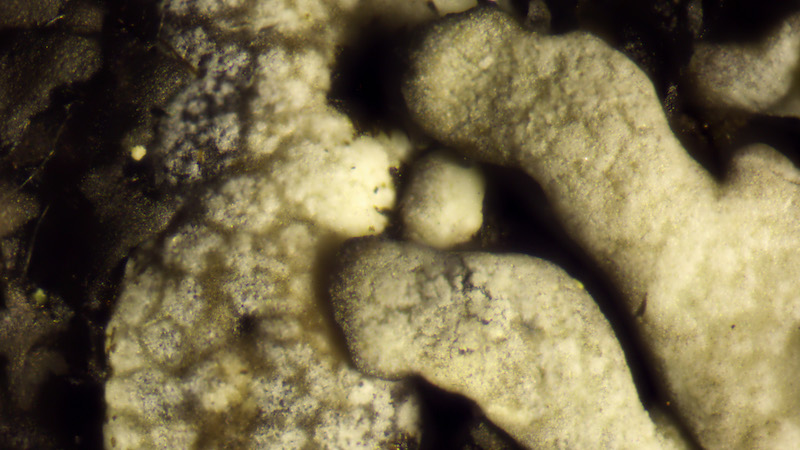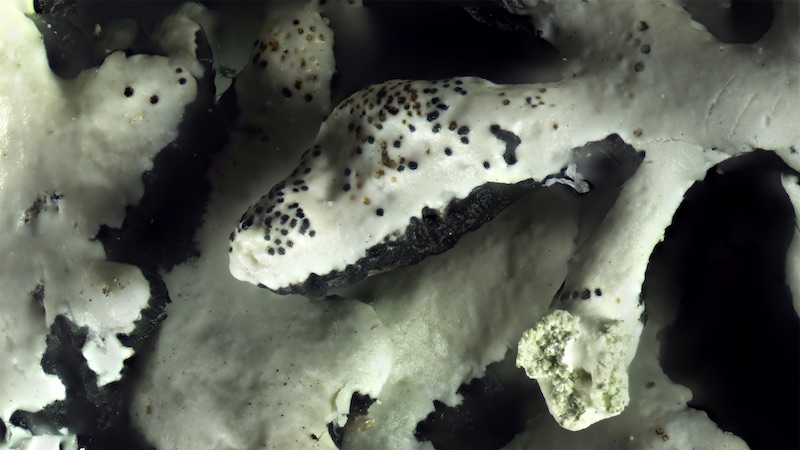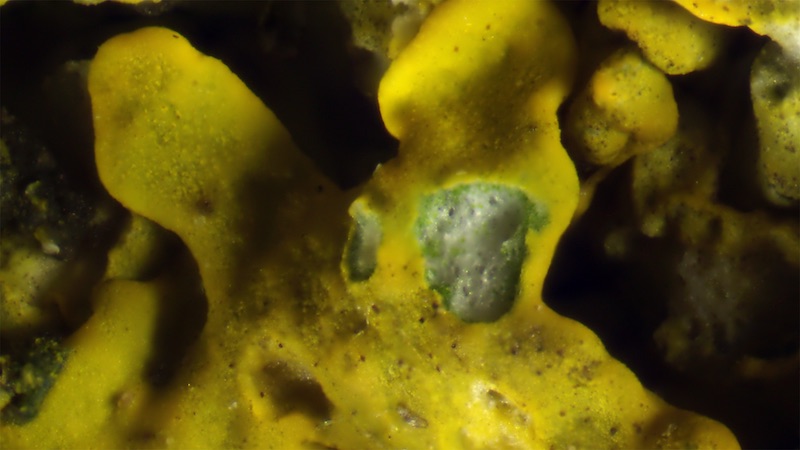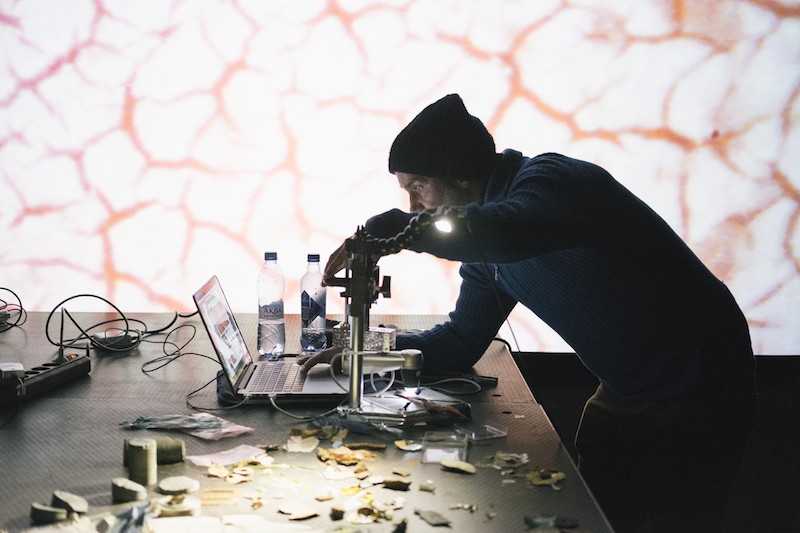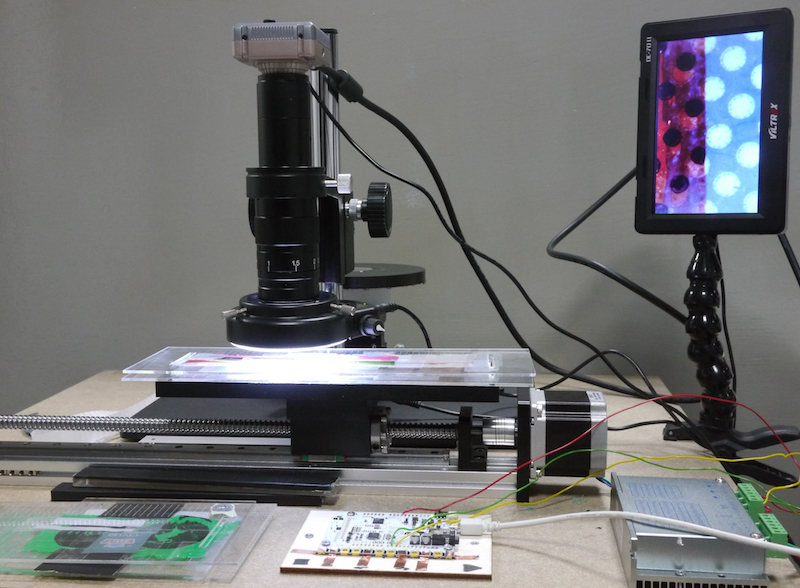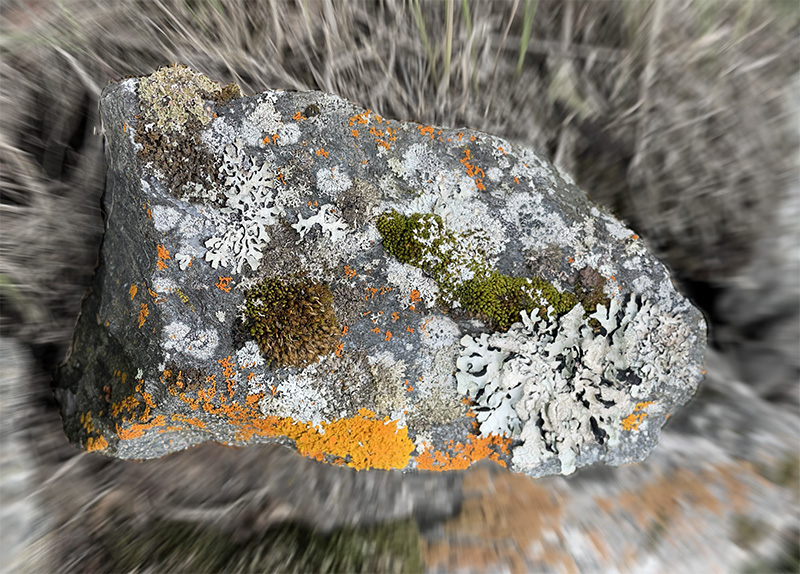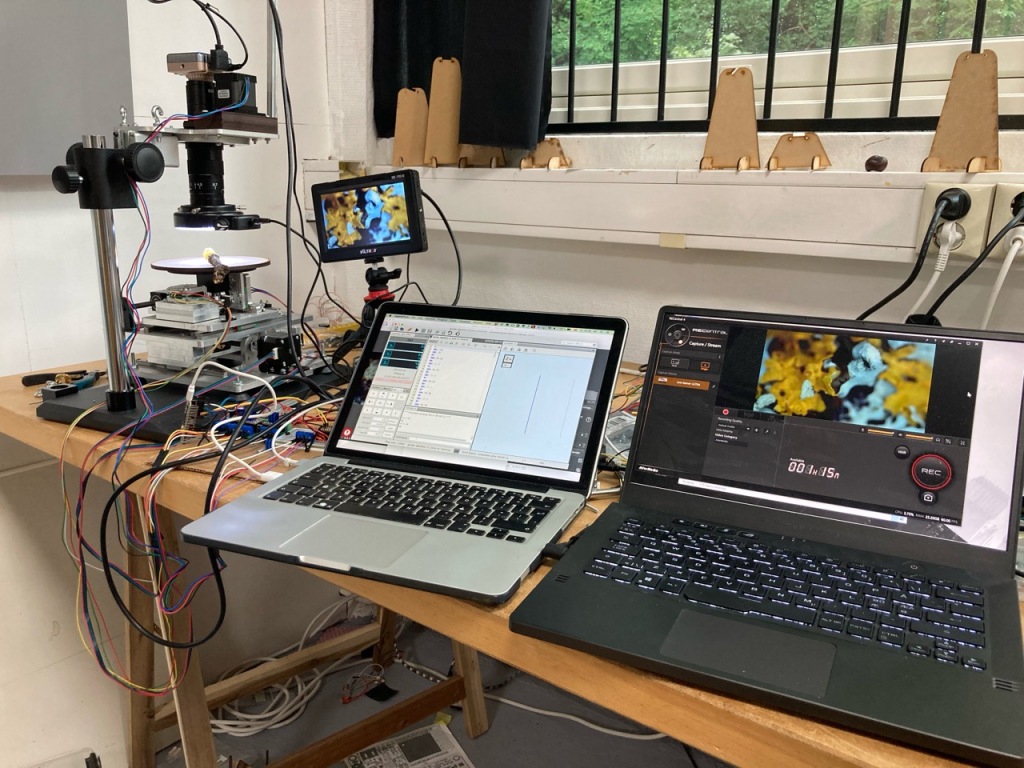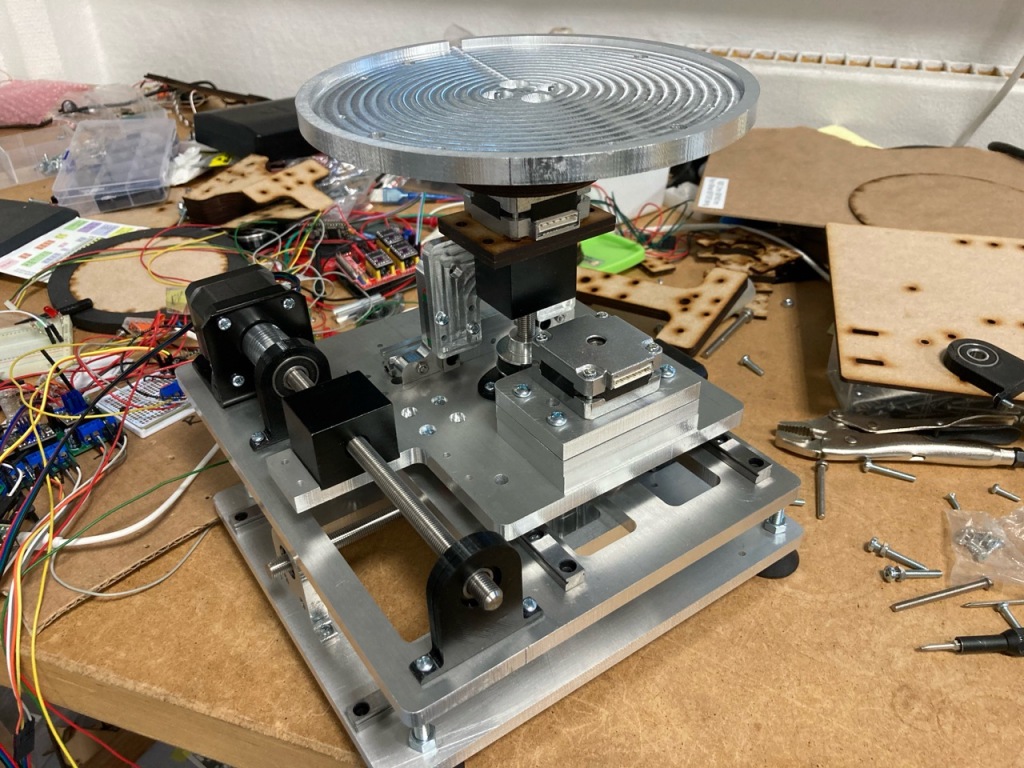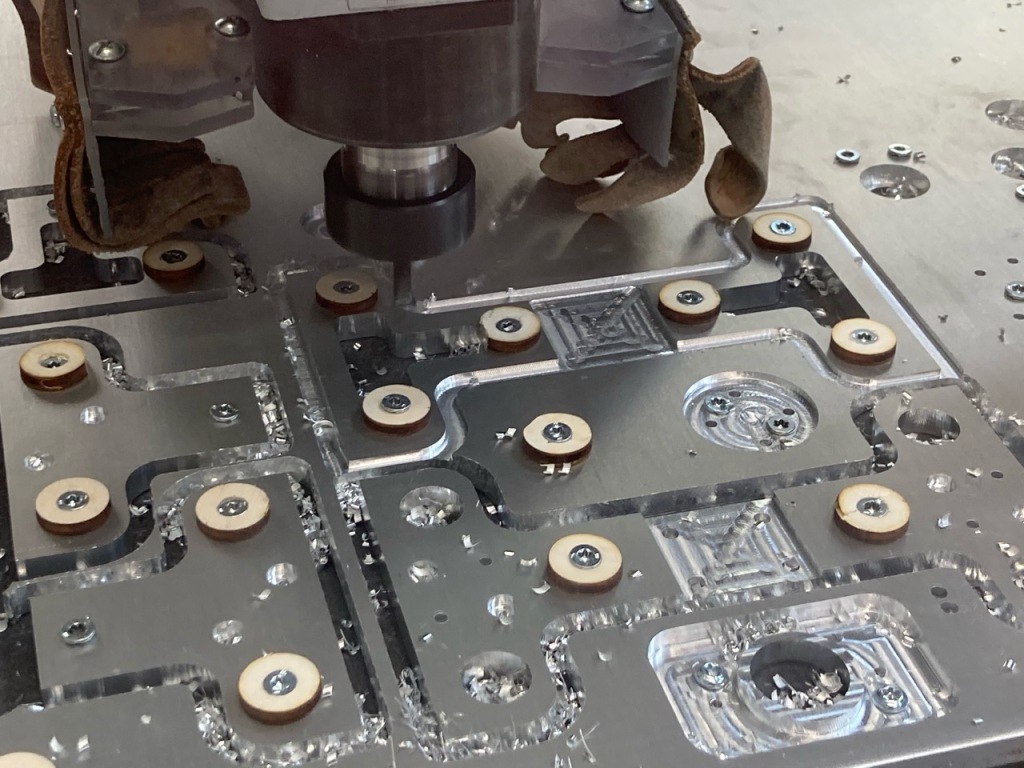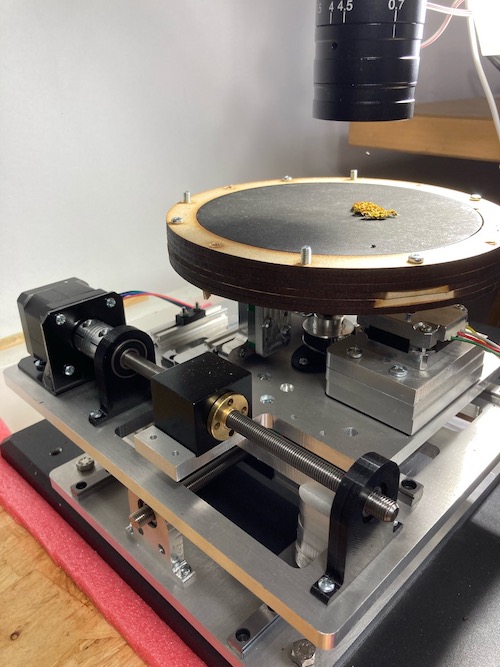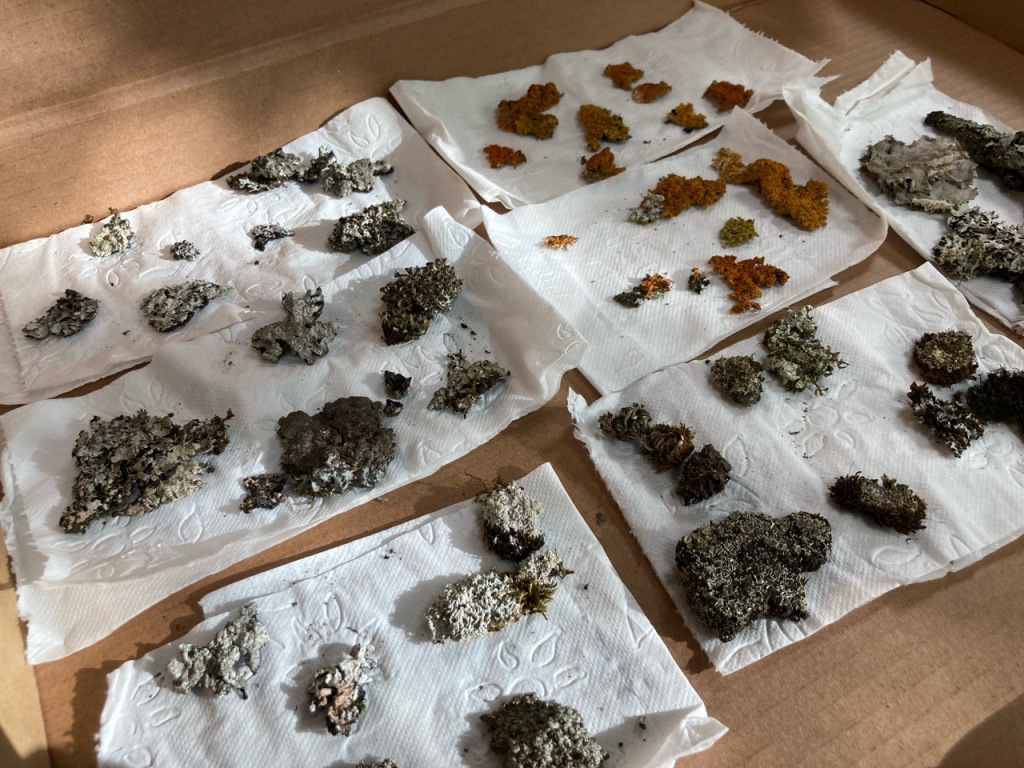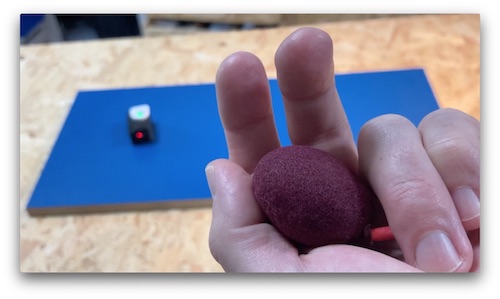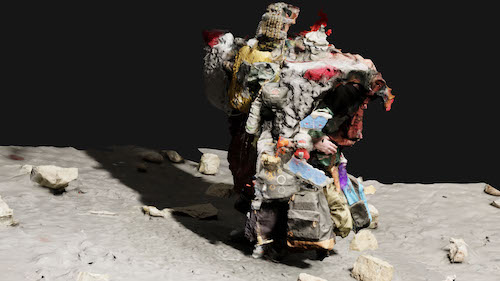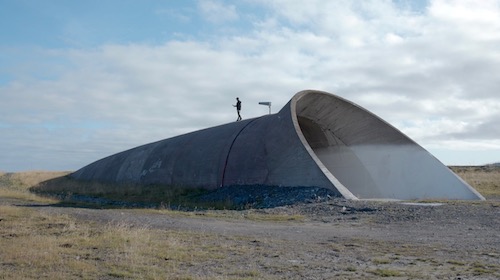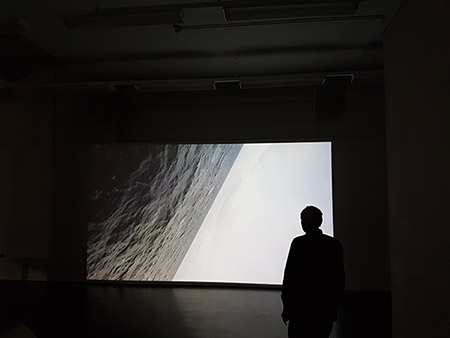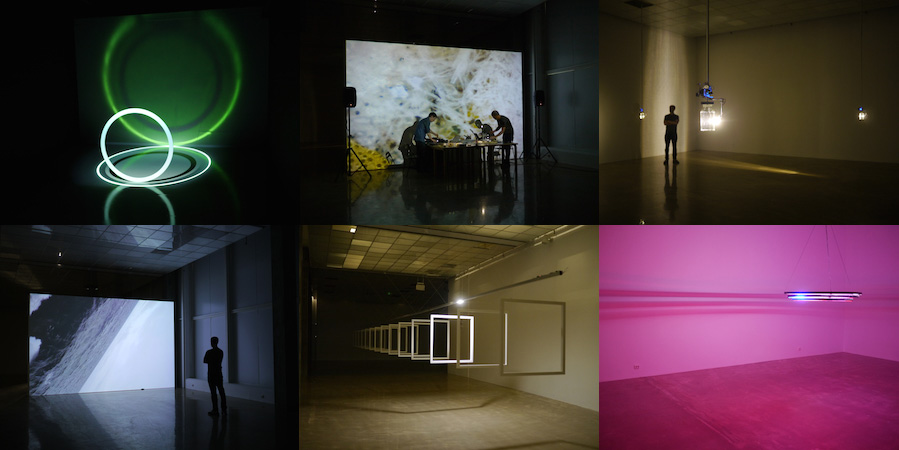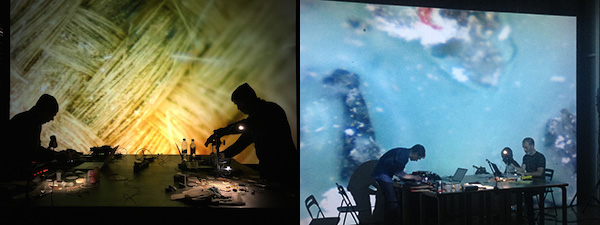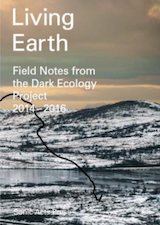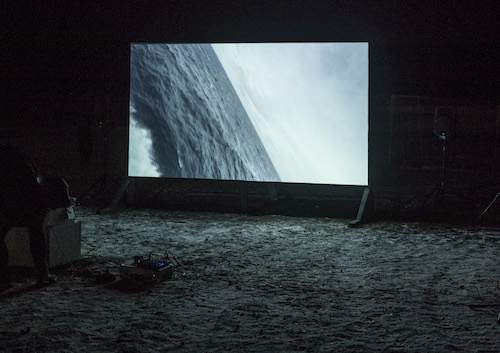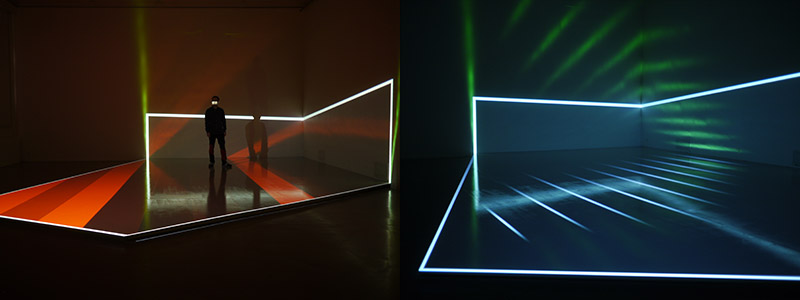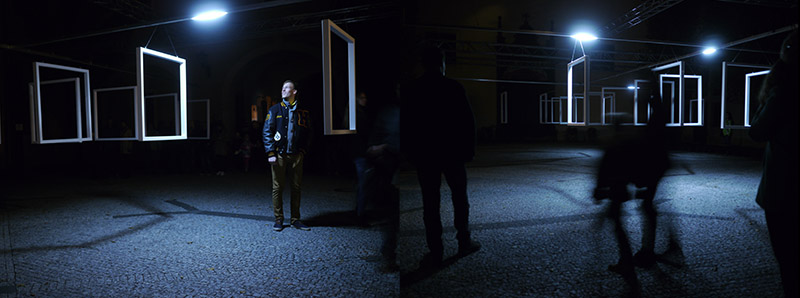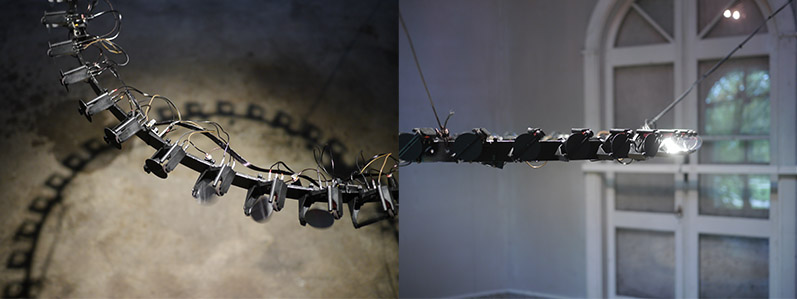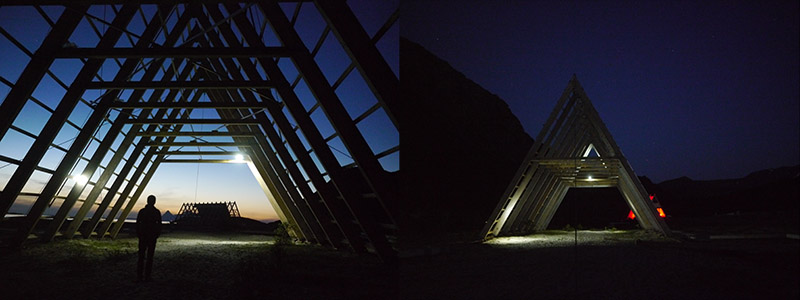
I thought it would be interesting to add some more information regarding the videoes presented for this screening, which is part of Greg Pope´s The Dream That Kicks series on experimental film and video. The Screening includes 9 of my video works, from 1995 to 2022.
This post basically compiles information from my series of instagram posts leading up to the screening.

retrospective #1
eye see
experimental video 1995
4 seconds
This work is included as an example of my early works with digital video. I was combining super8 and hi8 video recordings which was layered and transformed as a digital filmstrip in photoshop and exported as 160×120 pixel QuickTime video. This was the highest resolution I was able to work with on my computer at the time.
I had access to a professional betacam camera at the time through my work at the Student TV station in Trondheim, so I filmed these short QuickTime loops on a computer monitor, which made it possible to present it on film festivals. Two of these short works were even sold to NRK, the Norwegian State Broadcaster 🙂
I also presented this work on a floppy disk as part of my application to KIT, Trondheim Academy of Fine Arts, where I ended up studying.
During this period of experimenting with digital video I was happy to be part of a group of filmmakers in Trondheim, codex film+video. The main benefit of this was to be able to present complete screening programs to festivals and to be part of experimental film and video compilations like the Rage series, curated by Thomas Eikrem.
Screenings and compilations:
part of the Rage 4 video compilation, and sold to NRK2.
TMV festival 95 (N)
Peer Plexis Alternativ Bergen Filmklubb (N) 1997
codeX program UnderDog Kino Sentrum Scene 1995
codeX program framed.alt.culture (Hague, NL) 97
STV (N), ZTV(N/S), TV STOP(DK)



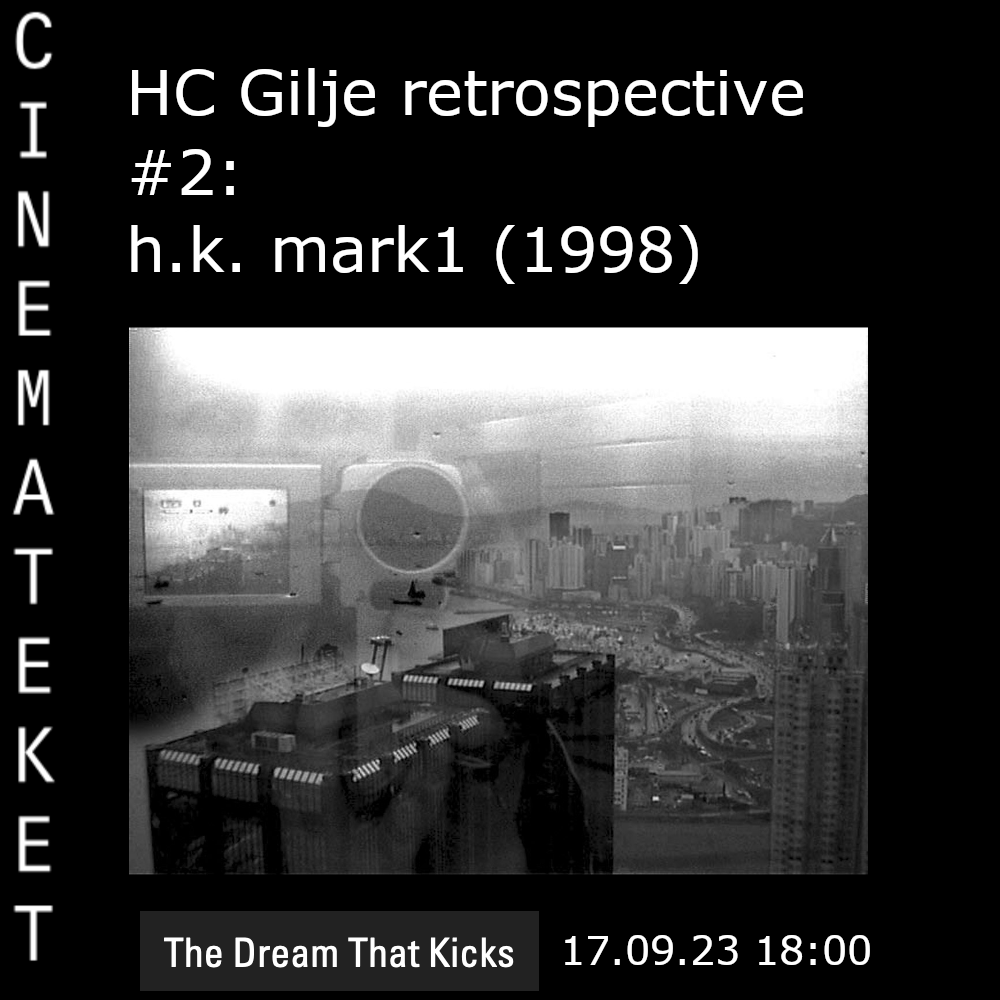
Retrospective #2
H.K.mark1
experimental video 1998
5 min
An exploration of horisontal, vertical and mental structures, based on footage from Hong Kong. Five hours of raw material filmed with a small dv camera, later chopped up and transformed on a macintosh computer. I worked on forming each part to a coherent piece of video and sound, before combining the pieces into a sequence.
« A kaleidoscopic visual journey through the dense urban landscape of Hong Kong, in which the artist uses a variety of layering and image manipulation techniques to achieve a graphic visual quality with references to the tradition of oriental art. In the midst of the urban bustle, a Buddhist monk is a stark and compelling impelling image, like the still point at the center of the maelstrom. As with many electronic image works which focus upon the environment, either urban or natural, this piece returns our attention to the changing status of humanity´s relationship with its habitat. »
from the Magnetic North catalogue.
Selected screenings:
Urban Experiences program at Circles of Confusion Volksbühne, Berlin nov 98
Kortfilmfestivalen i Grimstad 99
Hamburg Shortfilmfestival 99
Kurzfilmtage Winterhur 99
Nordisk Panorama, Reykjavik 99
Magnetic North, video program touring the UK fall.99-spr.00
Resfest,American digital festival on tour in the US fall.99
YUV.01 screening program club.transmediale_02 feb 2002
kansk video festival, Moscow. aug 2002
YUV.02 screening program:
CTM.03
Diagonale festival, Medienturn Graz 03.03 Austria
6.Video and New Media Biennale of Santiago, Chili
Warsaw Electronic Festival, Poland
Filmform at Fylkingen, Stockholm 04.04
Seoul Fringe festival, South-Korea 08.04
Cityscapes screening at 11-art.com, Beijing 11.05
Cityscapes: Landscape in Art program at Febiofest, Prague 03.06
Lowave screening at Centre Pompidou, Paris 05.06
Selected exhibitions:
Trondheim Kunstmuseum (Magnetic North program) 99
UKS Tilt 99
sites of elasticity, Lommel 2006
Erranti / Wanderers in contemporary video art, Palazzo Pubblico, Siena 2008
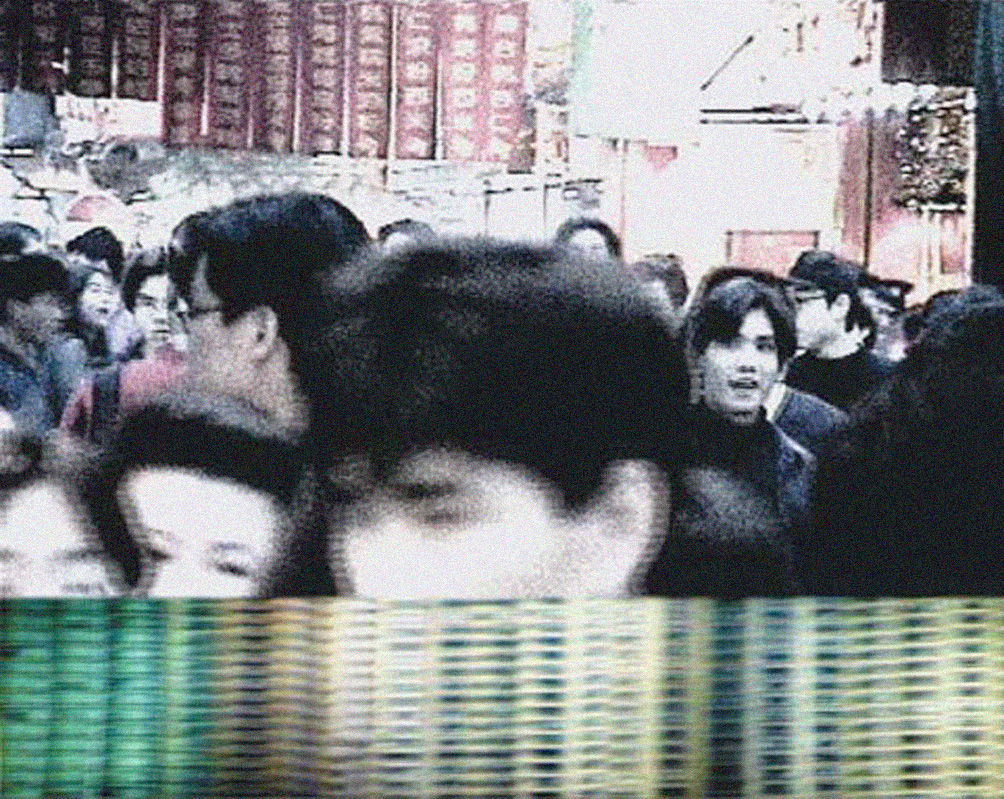


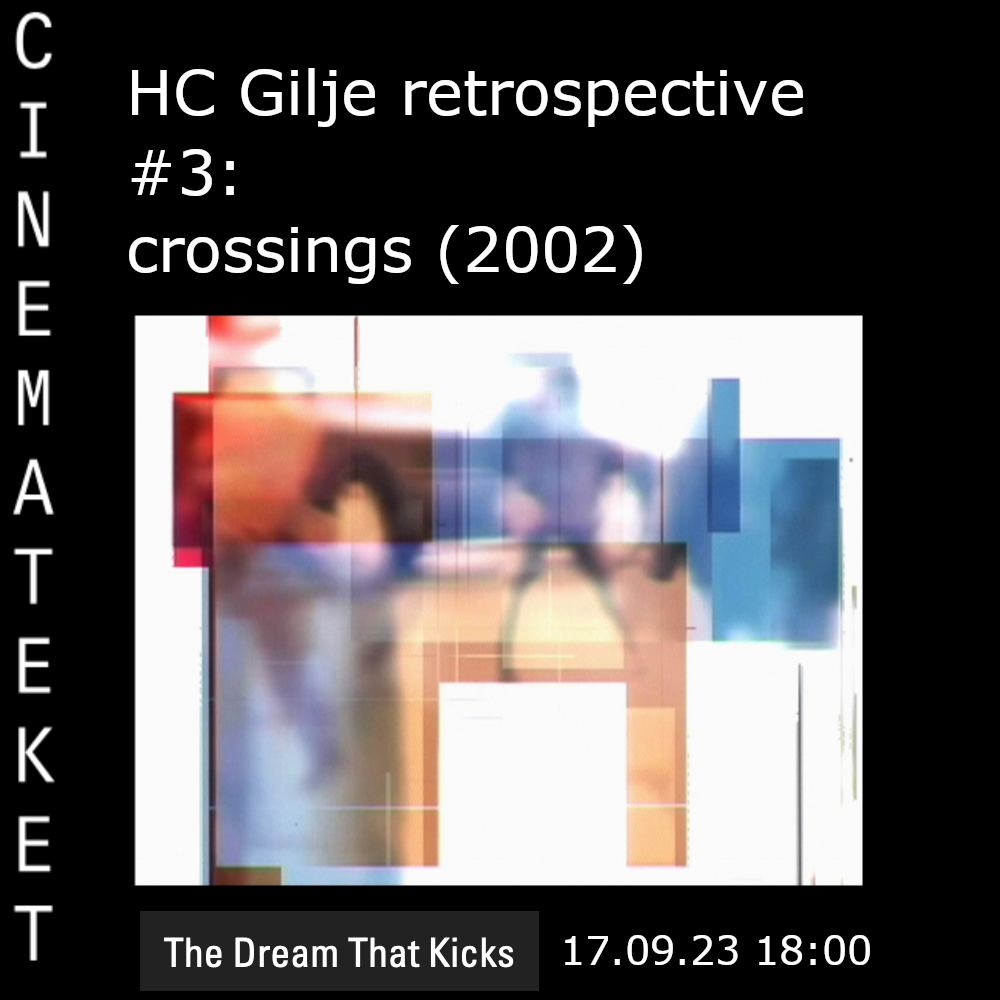
Retrospective #3
Crossings
experimental video 2002
4 min
Between 1998 when I made H.K.mark1 and 2002 a lot of things had changed through the emergence of realtime video processing, allowing me to do transformations and layerings of video live, compared to working in photoshop and after effects. With software like nato and later jitter for Max we built our own software instruments, and I started touring extensively with the video-impro-trio 242.pilots (Gilje, Lysakowski, Ralske).
Crossings was created live during a tour with 242.pilots. It is based on the principle of taking just a small part of each video frame and building layers of these fragments on top of each other, the resulting image is a collage of different time fragments.
Crossings appears on my dvd Cityscapes, released on #lowave 2005, as well as the 242.pilots dvd live in Bruxelles released on @carparkrecords 2002.
Soundtrack: a live remix by Justin Bennett of Silver Spider Morning by Jazzkammer
Selected screenings:
part of hiatus screening at mutek, Montreal. 05.02
backup festival. Weimar 11.02
YUV.02 screening program:
CTM.03
Diagonale festival, Medienturn Graz 03.03 Austria
6.Video and New Media Biennale of Santiago, Chili
Warsaw Electronic Festival, Poland
club.transmediale_03 Spatial Lines screening , Berlin 02.03
Rom for Kunst Videogalleriet at Oslo Central Station 04-05.03
Seoul Fringe festival, South-Korea 08.04
Cityscapes screening at 11-art.com, Beijing 11.05
Cityscapes: Landscape in Art program at Febiofest, Prague 03.06
HARDfilms:pixels and celluloid: cut and paste Kino Arsenal, Berlin jun 2007
Experimental 3 Osaka oct 2009
Programmer le temps: 50 ans d´art numerique, Illuminations exhibition Galerie G, Paris jun 2010
Cityscapes screening at Electron Festival, Geneva apr 2011
Selected exhibitions:
abstraction-now, künstlerhaus, wien 08-09.03
flashart biennale, prague national gallery jun-aug 2003
Cityscapes part of Reframing Reality exhib. at Museet for Samtidskunst Roskilde nov 2010-feb 2011

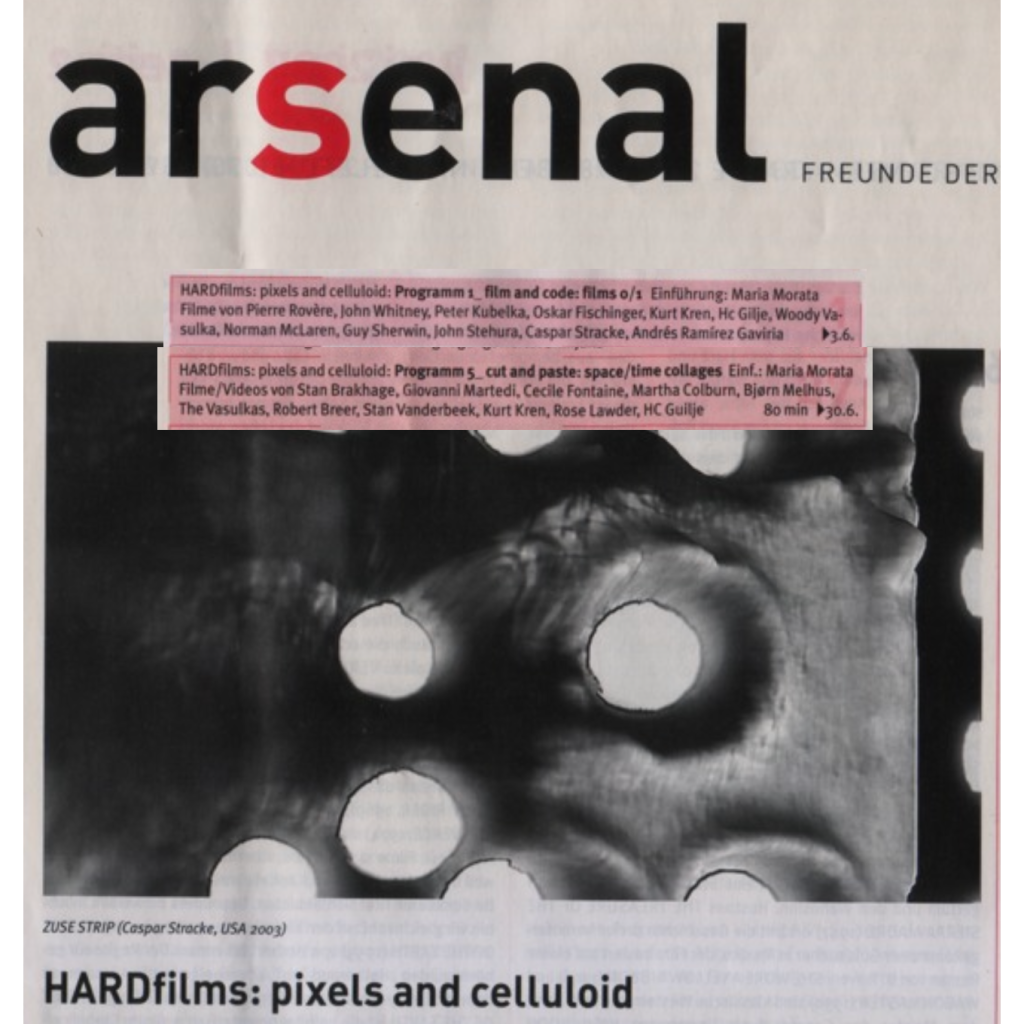
***********

Retrospective #4
shiva
experimental video 2003
8 min
soundtrack: kelly davis
When touring with various live cinema projects I was always filming, and that material became part of the performances. The performances were always improvisations, so could be very different from each gig.
I recorded most of the live performances which in some cases then became raw material for single channel videos, like shiva.
Shiva is based on recordings from BLIND performances. BLIND was a collaboration between me and kelly davis (@studiokellydavis).
The original footage was mainly from a 1km building outside Rome called corviale where I had been invited to do a project in 2002 (see last image), and from St. Petersburg (super8 from around 1995).
There was supposed to be a DVD release on Audioframes with excerpts from performances at Ouvertoom 301 and Dans for Voksne, but unfortunately that fell through (I am considering releasing some of that material because I think it is pretty good 🙂 )
Selected screenings:
Videoville program curated by mooroom at Enzimi festival. Rome sep 2003
KViKT, Reykjavik, Icelandic Airwaves festival 10.03
transmediale04, ambient land program, Berlin 02.04
Filmform at Fylkingen, Stockholm 04.04
Seoul Fringe festival, South-Korea 08.04
Under A/V signals program at Videozone, Tel Aviv, 11.04
rencontres paris-berlin, paris, 10-11.04
Cityscapes screening at 11-art.com, Beijing 11.05
Cityscapes: Landscape in Art program at Febiofest, Prague 03.06
Cityscapes: Nouvelles Images program at Rencontres Visuelles, Lille 04.06
lowave screening at MK2 Beaubourg, Paris 04.06
Cityscapes screening Club Instabil, Braunschweig sep 2006
Colorfieldremix program in Washington DC may 2007
Cityscapes screening at Moho gallery Krakow nov 2007
Cityscapes screening at Electron Festival, Geneva apr 2011
Selected exhibitions:
Cityscapes part of Reframing Reality exhib. at Museet for Samtidskunst Roskilde nov 2010-feb 2011
Total City, Institut Valencià d’Art Modern may-jul 2012


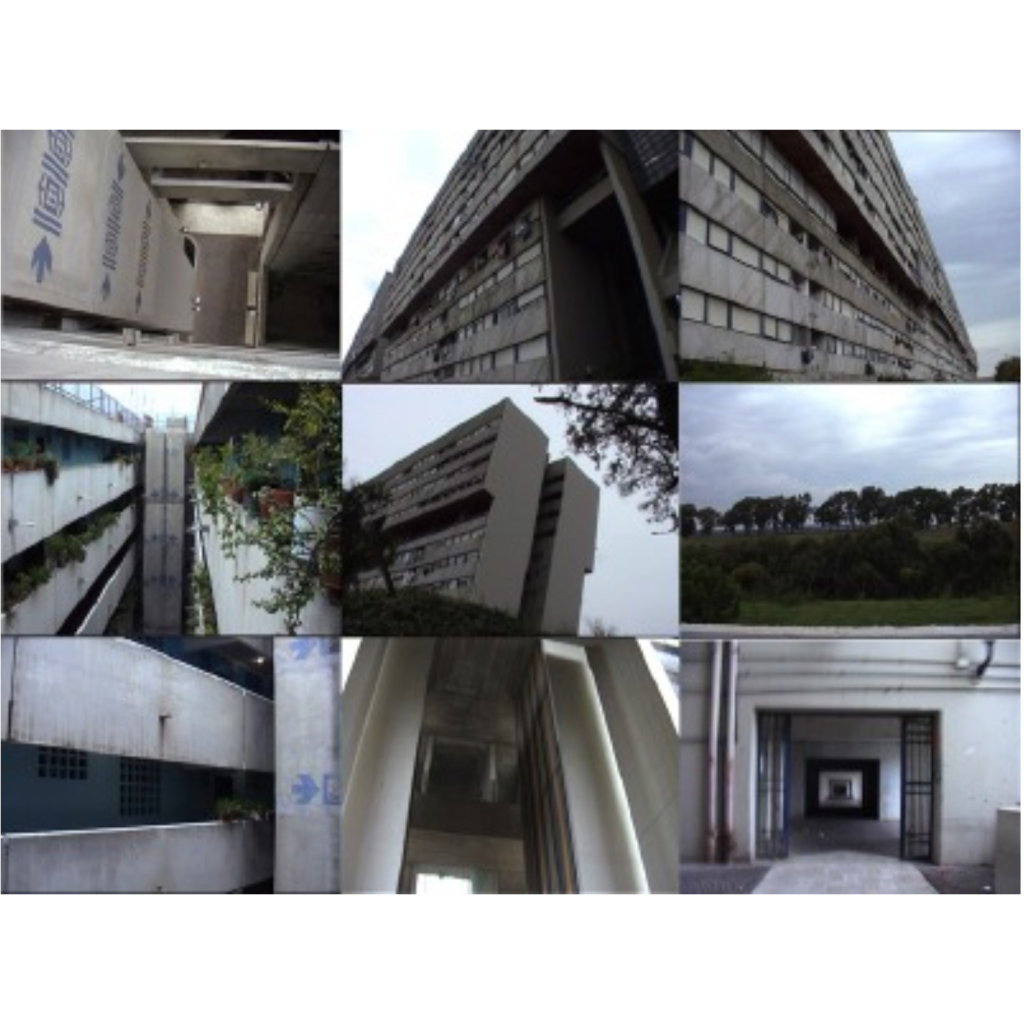
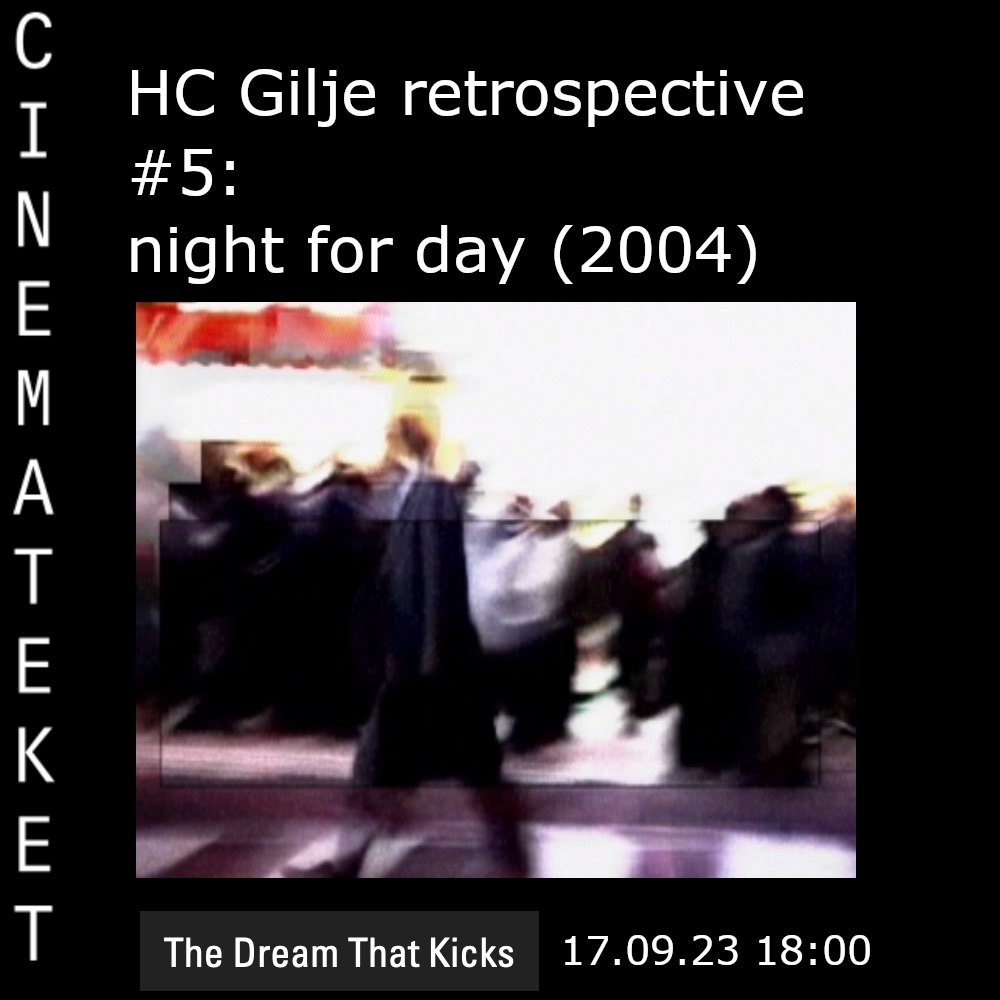
Retrospective #5
Night for Day
experimental video 2004
26 min
collaboration with Jazzkammer
Originally commissioned as a live performance for Randomsystem Festival in Oslo (thanks @salamanderrishauo), night for day ended up as an audiovisual composition in 12 parts. It is based on material shot and recorded in Tokyo, which through intense hours of improvisation and meticulous editing has been developed into something which was described as expressionistic impressions from an urban reality, 12 audiovisual poems assembled into a surreal whole.
Night for day was a collaboration between HC Gilje and the noise duo Jazzkammer (@lassemarhaug and @johnhegre). We toured twice together in the early 2000s, in Europe and Japan, and also collaborated on Twinn, a piece with dance company Kreutzerkompani which I was part of at the time.
This was the last of my videos focussing on urban environments, and together with h.k.mark1, crossings and shiva, night for day was released as a DVD on Paris-based lowave. A huge thanks to Chris and Silke at lowave! One of the highlights was the opportunity to present this video at Cinemateque Francaise in Paris.
Screenings:
premiere random system festival at Parkteateret oslo 2004
The Norwegian Shortfilm festival 2004
Momentum 2004
part 3 screened at Eyes for other Skies (next wave festival), Melbourne Australia 2004
part 3 Seoul Fringe festival, South-Korea 2004
X-film festival Sofia 2005
Cityscapes screening at 11-art.com, Beijing 2005
Cityscapes screening at interferenze festival, Italy sep 2005
Cityscapes: Landscape in Art program at Febiofest, Prague 2006
Cityscapes: Nouvelles Images program at Rencontres Visuelles, Lille 2006
Cinemateque Française, Paris 2006
Paradiso, Amsterdam, 2007
Transvisualia festival, Gdynia Poland 2007
Festival Image de Ville: Lumieres sur la nuit, Aix en Provence 2009
Cityscapes screening at Electron Festival, Geneva 2011


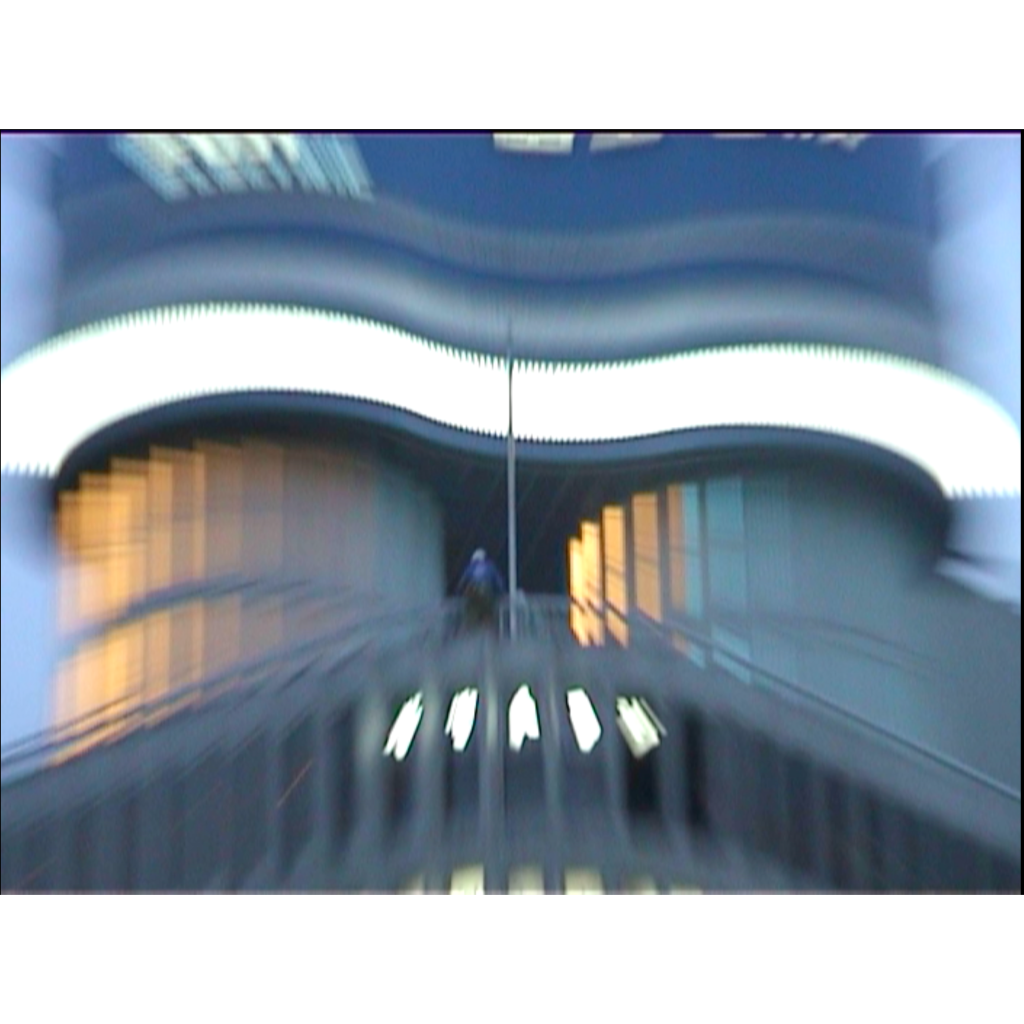


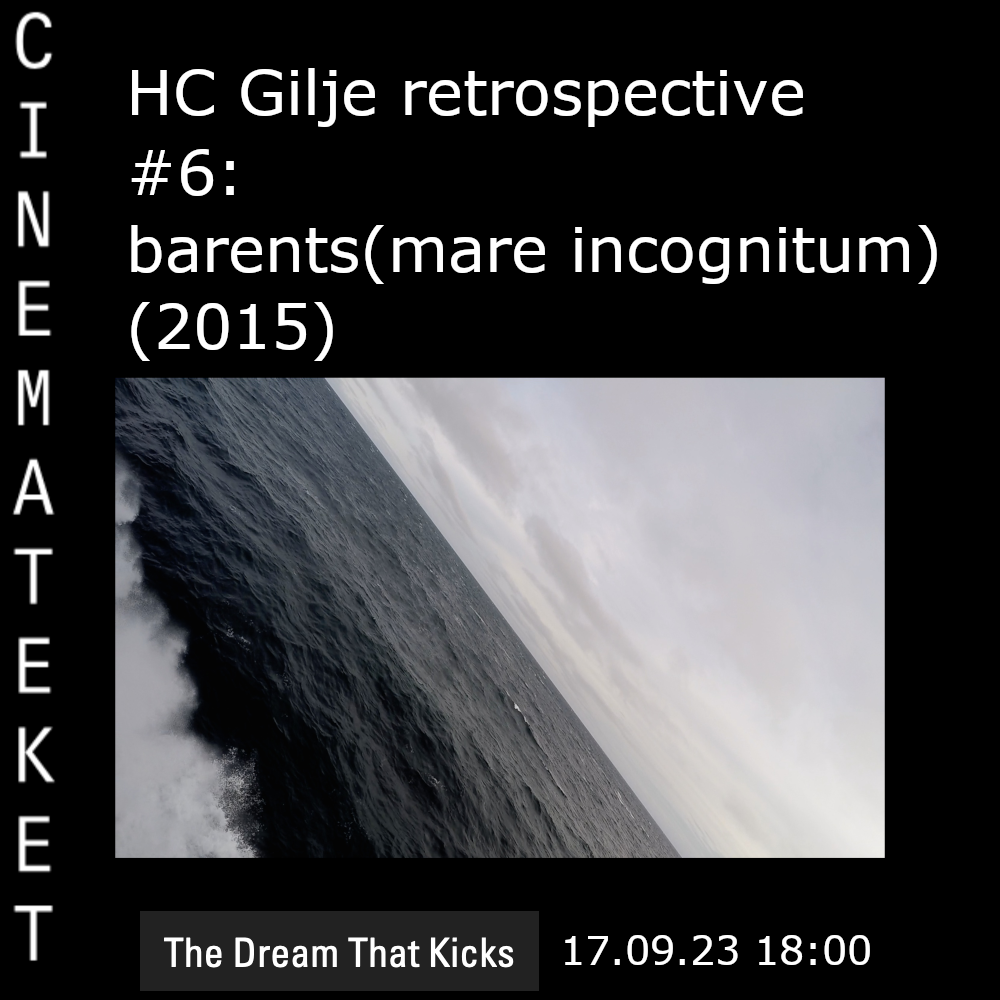
Retrospective #6
Barents (mare incognitum)
Experimental video 2015
4 min
This work has primarily been shown as an installation, but also exists in a screening version.
A view of the Barents Sea slowly rotating: up becomes down, east becomes west.
Invisible borders and thresholds, and the potential for disaster inherent in the ocean.
Filmed at the border between Norway and Russia, pointing towards the North Pole, using my custom built orbital camera.
The work is about the ocean surface as a border to a vast world mostly hidden from us, occupying more than two-thirds of our planet. It is about the beauty and power of the ocean, in everything that is still unexplored underneath its surface, but also about the potential for disaster with rising sea levels, acidification, rising temperatures, plastic pollution, risky petroleum activity and an extreme decline in marine biodiversity.
Finally, it is about the ocean as something that was there long before humans and which will be there long after we are gone.
Commissioned by Sonic Acts and Hilde Methi for Dark Ecology 2015
It won the expanded media award at @stuttgarterfilmwinter in 2017
Exhibitions:
Etnografiska Museet i Stockholm, part of exhibition Human Nature 2020-2022
Världskulturmuseet, Gøteborg, part of exhibition Human Nature 2019-2020
Wood Street Galleries, Pittsburgh, group show Boat Trip 2019
Broen til Framtiden, Folkets Hus, Oslo 2018
SALT, Oslo , part of Dark Eocology program 2018
Screen City Biennial, Stavanger, group show 2017
Stuttgarter Filmwinter, group show 2017
Van Gogh Museum, Amsterdam as part of Sonic Acts presentation of Dark Ecology 2016
Kristiansand Kunsthall, part of solo exhibition 2016
Klimafestivalen 112 in Oslo, 2016
EYE filmmuseum Amsterdam, 2015
Dark Ecology, Nikel, 2015
Screening:
Arctic Moving Image & Film Festival, Harstad, 2022
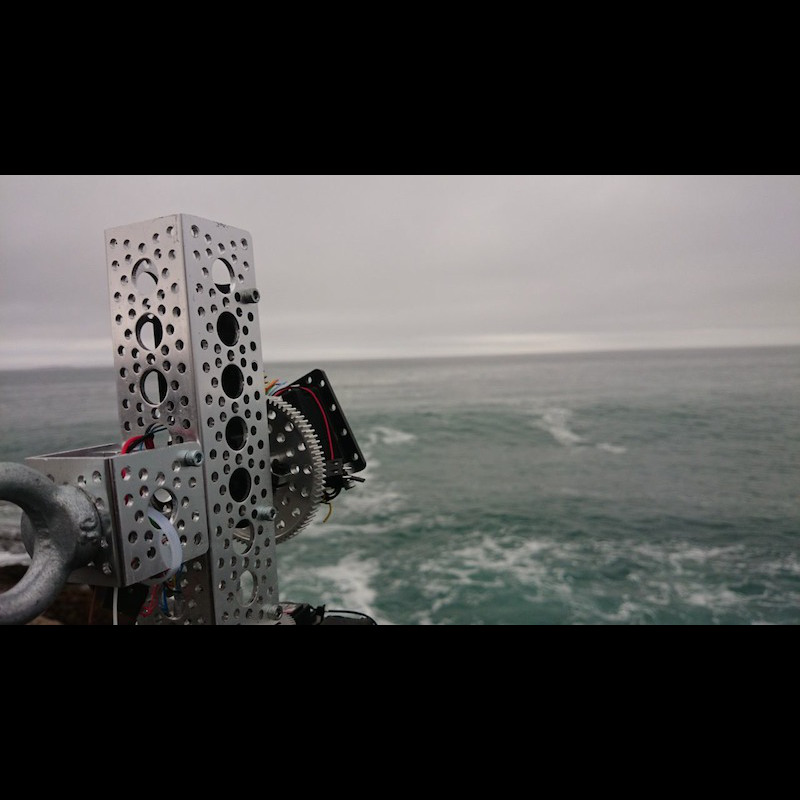

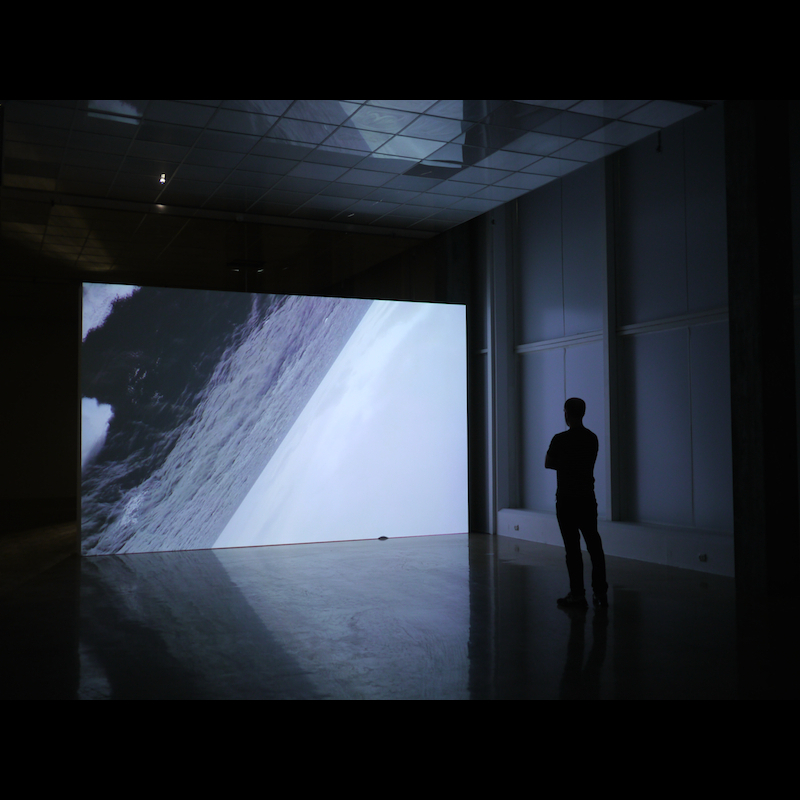

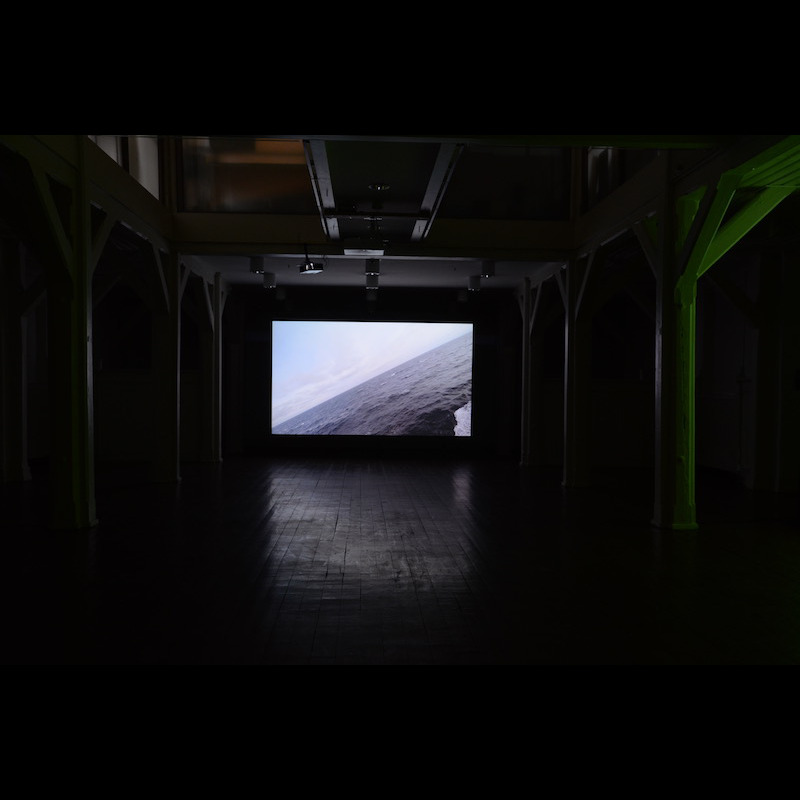

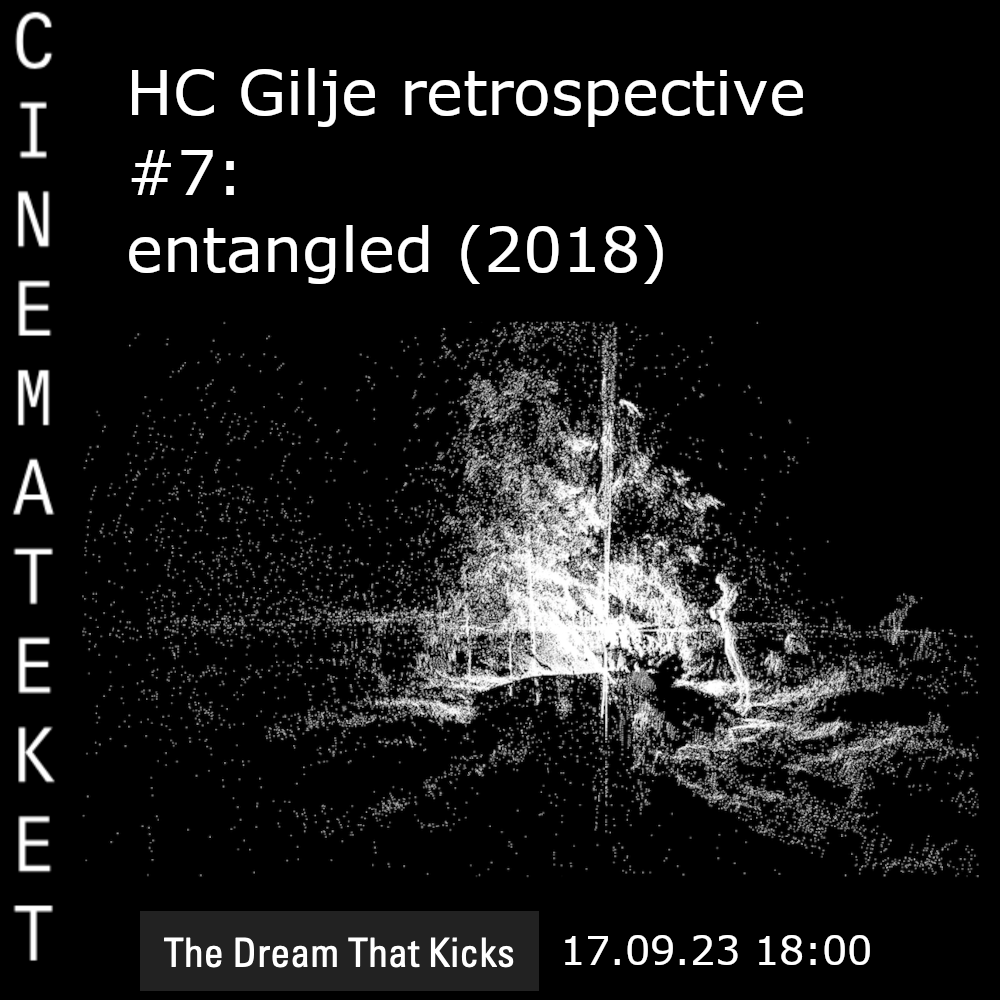
Retrospective #7
entangled
experimental video 2018
2 min
excerpt from video installation
In entangled I used the laser scanning technique LIDAR to create a 3D cast of myself in the forest – a frozen moment in time orbited by a virtual camera.
I use a custom made LIDAR scanner to capture people and their environment which is lifted from its physical presence and transformed into a cloud of white points in a black emptiness. The scanner sends out pulses of light which interact with the physical structures of the space and what is left is a thin shell, a virtual cast of the original space and the people in it. Physical spaces become weightless spinning ghost spaces where the laws of gravity and solid matter no longer applies.
The form can be seen from the inside and outside, from below or above, close or at distance, solid matter has dissolved into textile like veils.
In entangled I explore ideas about our relations to the world: of being part of a greater whole, our brief appearance in the cosmic time scale but at the same time we are made of the basic building blocks of the universe created many billion years ago (it might be a cliché, but still true: We are recycled star dust).
We are responsible for and deeply entangled in the disintegration of life and diversity on earth. It is therefore vital to look at our relation to other species and objects: we are co-habitants sharing the same world, in the same way as our body is a shared world of organisms and cells, where the majority of DNA is not our own.
entangled was originally presented as a real-time installation: The 3d model spins at a constant rate while the camera view of the virtual camera changes at regular intervals.
The screening version was first presented at Arctic Moving Image & Film Festival in Harstad, 2022.
Exhibitions:
ANX (Atelier Nord), Oslo 2018
Kunsthall Grenland, 2018




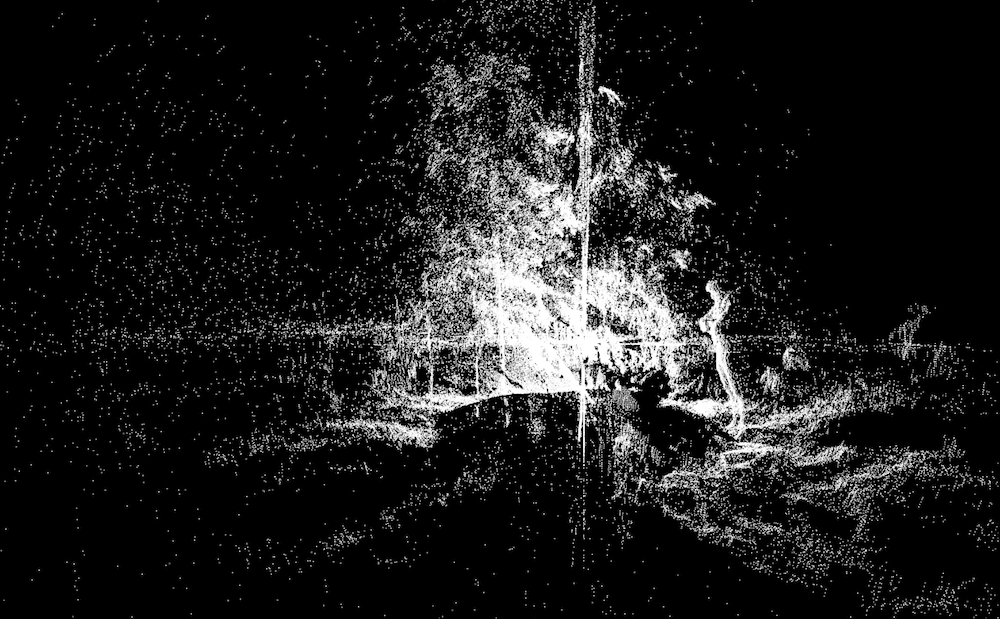

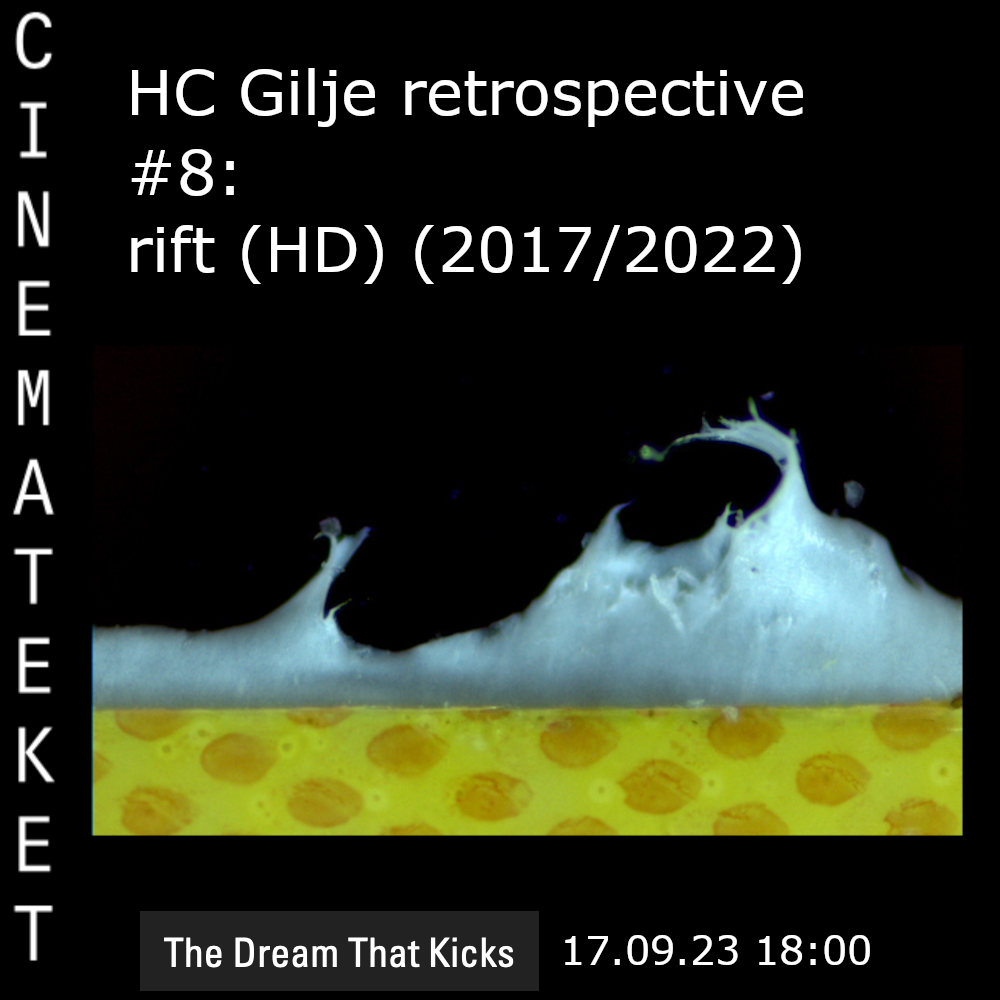
Retrospective #8
rift(HD)
experimental video 20017/2002
7 min
Soundtrack by Justin Bennett
rift consists of over 10000 microscope images of plastic wrappings from consumables.
rift is a film about petrochemicals, the completely different durations involved in the process from plankton to oil to plastic to waste, and the relation between depth and time through the layers of the Earth. The film takes inspiration from the hand painted and colourful animation films that Len Lye made in the 1930s. With a soundtrack by Justin Bennett.
Originally made for Vertial Cinema (cinemascope shown in the vertical format), commissioned by @sonicacts / Dark Ecology in 2017.
Rift has now been remade for horisontal screening in 16:9 format which premiered at Arctic Moving Image & Film Festival 2022.
Screenings rift (HD):
Arctic Moving Image & Film Festival, Harstad 2022
Onion City Experimental Film Festival, Chicago 2023
Norwegian Short Film Festival, Grimstad 2023
Screenings rift (original Vertical Cinema version):
Vertical Cinema at Sonic Acts Festival, Paradiso, Amsterdam, feb 2017. Premiere
Gøteborg Film Festival, 2018, Vertical Cinema program
Inversia Festival, Murmansk, 2018, Vertical Cinema program
Videoex Festival, Zurich, 2018, Vertical Cinema program
Exhibition rift (9:16 format)
ANX (Atelier Nord) 2018
Klimafestivalen §112, Deichmann 2018
Exhibition rift (Vertical Cinemascope):
Academy Museum of Motion Pictures, Los Angeles 2023-2024


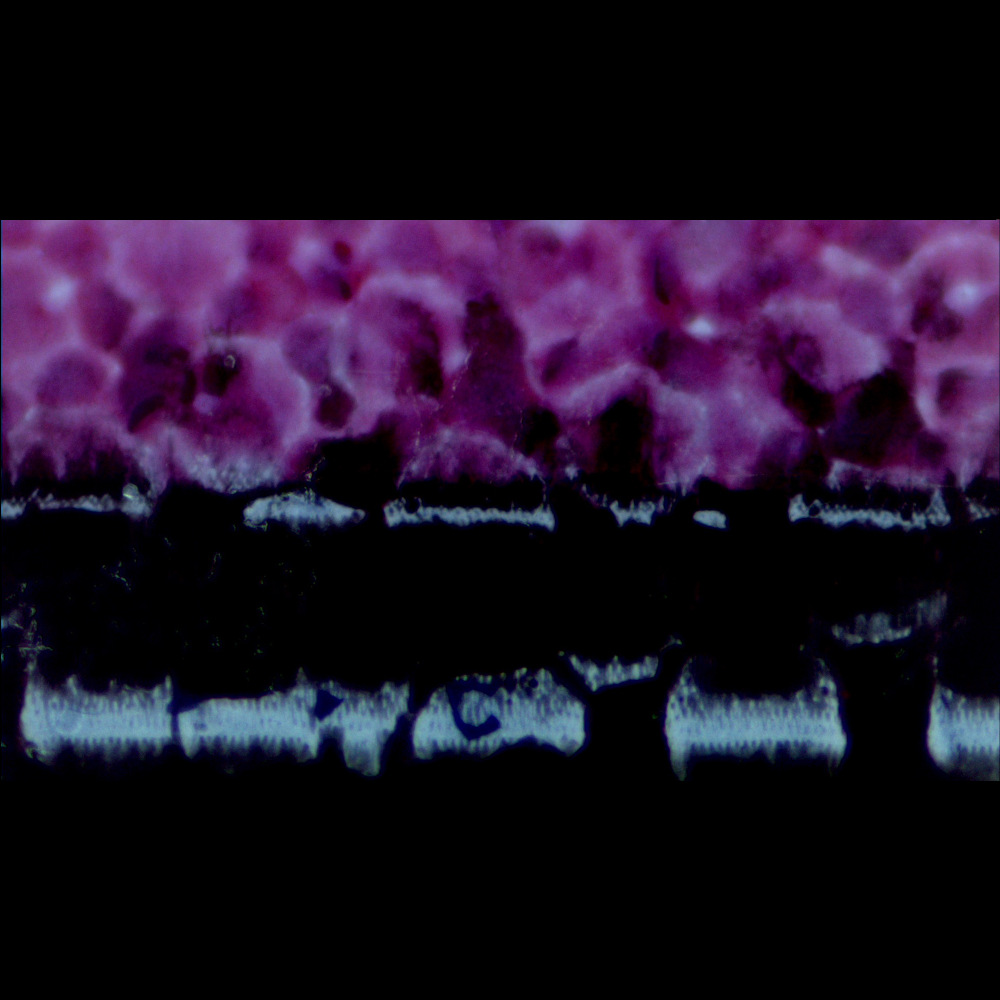
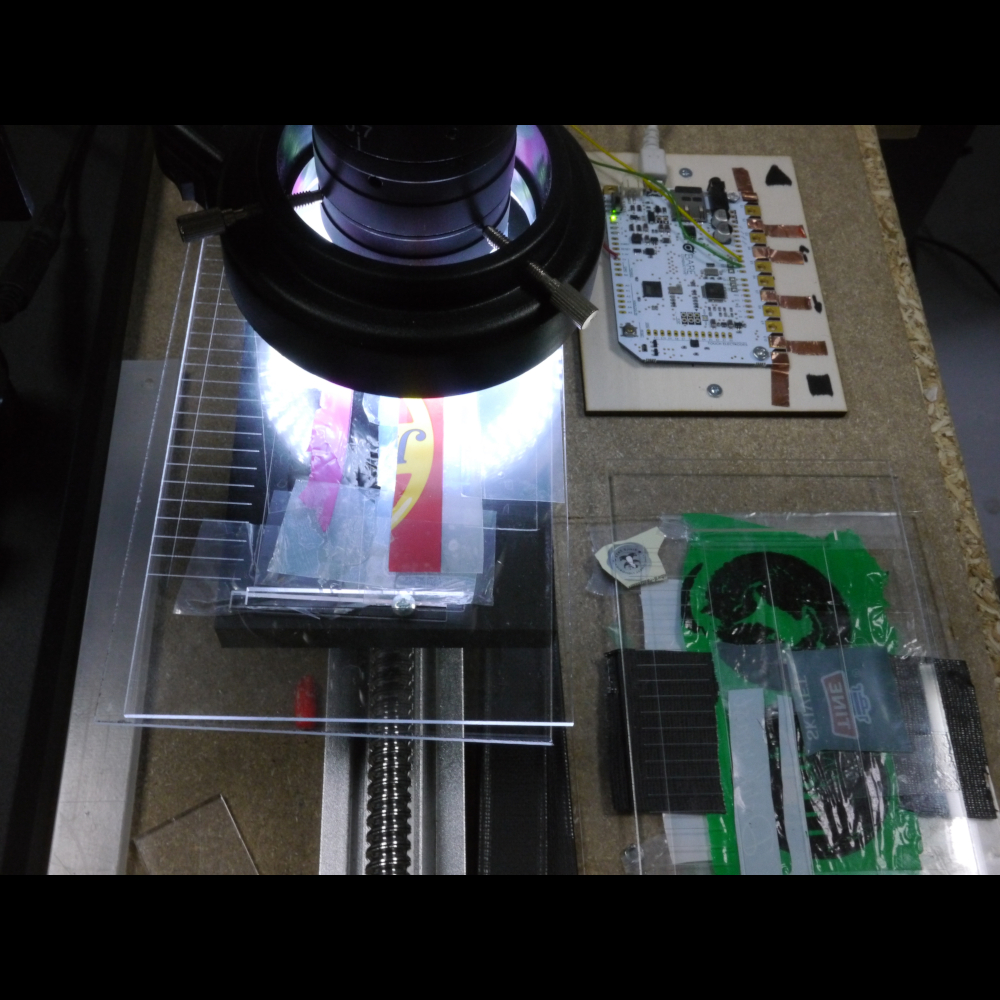
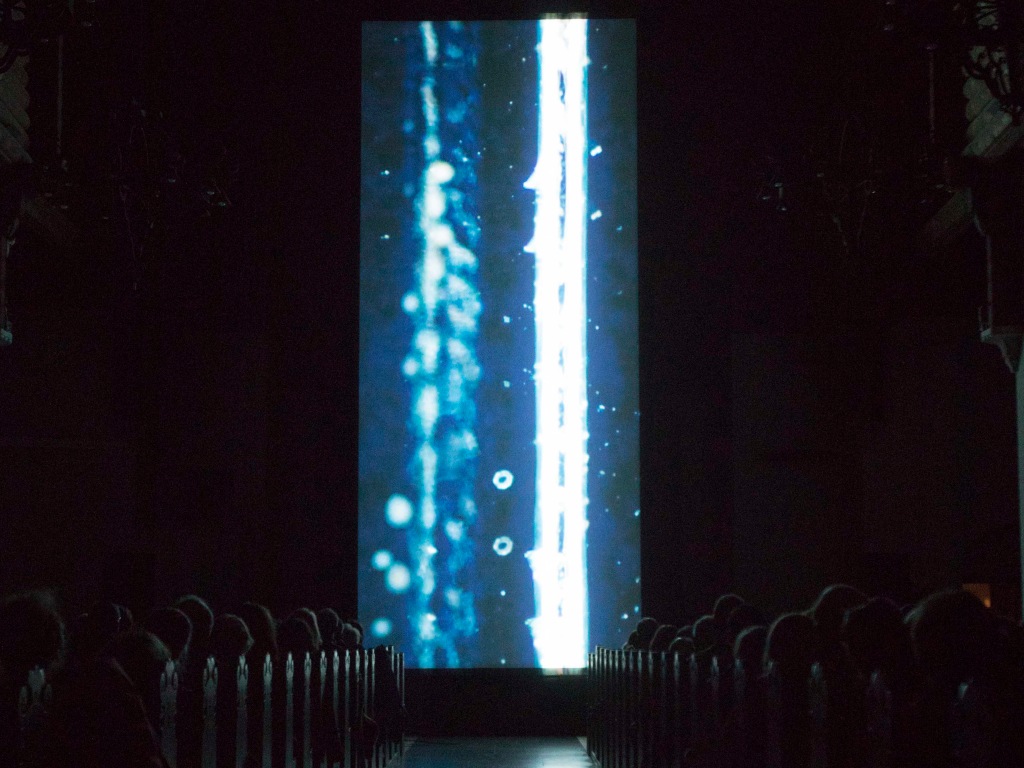

Retrospective #9
The intimacy of Strangers
experimental video 2022
10 min
An exploration of the microscopic landscapes of lichen living on one rock in the stone fence around Trondenes Kirke in Harstad, Norway.
Beyond their fascinating variations in appearance, texture and colour, lichens pose challenges to individualist models of species evolution. As explored in the writings of Alexander Bogdanov, Lynn Margulis, Donna Haraway and Merlin Sheldrake (the title of the video is taken from one of the chapters in his book Entangled Life), amongst others, lichens are not one singular organism. Rather, they are a symbiosis of several organisms from different kingdoms – a partnership of fungal and photosynthesising organisms, such as algae or bacteria. In this way, lichen offer radical models of growing together and acquiring new traits through inter-organism intermingling.
The film, commissioned by the Arctic Moving Image Film Festival, was created using a custom-made computer-controlled mechanical stage and a digital microscope. Almost 50,000 microscopic images were stacked and stitched together by Gilje.
For a detailed read-up on the making of this video, check out my blog post.
Screenings:
Arctic Moving Image & Film Festival, Harstad 2022
Sonic Acts Biennial, 2002
Kunstrum Fyn, 2022
Biophilia, Mexico City 2022
Kunstsenteret i Buskerud 2023
Kongsberg Kunstforening 2023



